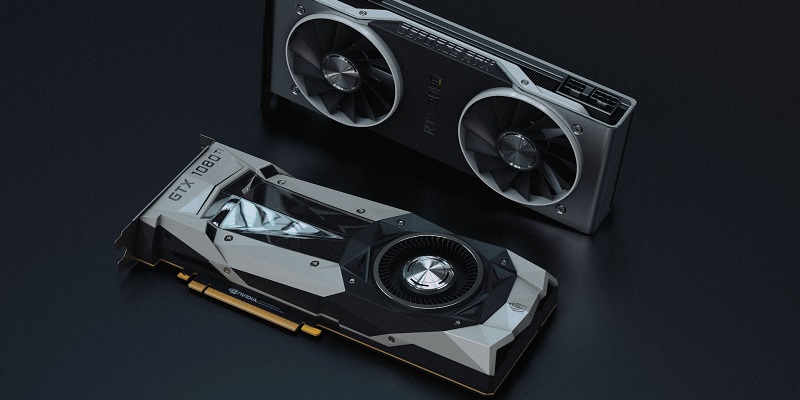Intel has just announced its latest professional GPU lineup, the Arc Pro A60 & A60M Mobile. These GPUs are based on the Xe-HGP “Alchemist” architecture and are set to compete with Nvidia and AMD in the professional GPU market. Intel’s GPU offerings have come a long way, and the Arc Pro A60 is a groundbreaking addition to the lineup. The Alchemist architecture is designed to deliver exceptional performance for gaming and other professional applications.
The Xe-HPG “Alchemist” architecture
The Intel Arc Pro A60 GPU lineup is based on the Xe-HPG “Alchemist” architecture, which is designed to offer exceptional gaming performance. The architecture features advanced graphics capabilities, including real-time ray tracing, variable-rate shading, and mesh shading. These features enable game developers to create more immersive gaming experiences for players.
Specifications of the Arc Pro A60 GPU lineup
The Intel Arc Pro A60 GPU lineup features 16 Xe cores with 256 shading units, 2048 floating point units, and 12 GB GDDR6 memory with a 192-bit memory interface. These specifications are a significant improvement over the previous generation, the Arc Pro P50, which featured only 8 Xe Cores and 8 GB GDDR6 memory. The increased number of cores and memory capacity of the Arc Pro A60 GPUs translate into an exceptional gaming experience, making it a must-have for professional gamers and content creators alike.
Improvement over the Arc Pro P50
The Arc Pro A60 GPU is a significant improvement over the previous generation, the Arc Pro P50. The Arc Pro P50 featured only 8 Xe Cores and 8 GB GDDR6 memory, which pales in comparison to the Arc Pro A60’s 16 Xe Cores and 12 GB GDDR6 memory. The increased processing power and memory capacity of the Arc Pro A60 GPU are sure to offer a significant improvement in performance and gaming experience.
Total board power consumption
The total power consumption of the Arc Pro A60 GPU lineup is marked at 130W by Intel, which is reasonable and suitable for mid-tier workstations. This power consumption is achieved through the use of advanced power efficiency technologies including Intel’s Turbo Boost technology, which ensures that the GPU’s performance is not compromised.
Design of the GPU
The Arc Pro A60 GPU lineup features a single-slot design and the usual blower design, which is optimized for maximum performance and cooling, ensuring that the GPU maintains optimal temperatures during intense gaming sessions.
The A60M mobile GPU features similar core specifications as its desktop counterpart but has a reduced memory capacity of 8 GB on a 128-bit bus. This design is optimized for use in laptops and other mobile devices, giving gamers and content creators access to the same level of performance and power efficiency on the go.
PCIe 4.0 x16 configuration
Both the Intel Arc Pro A60 and A60M mobile GPUs feature a PCIe 4.0 x16 configuration, which is a vast improvement from the previous Arc Pro offerings on the same architecture, as they were limited to a PCIe 4.0 x8 interface. The PCIe 4.0 x16 configuration provides increased bandwidth and enables faster data transfer rates, resulting in optimal performance.
Regular driver releases and ISV certification
Intel Arc Pro GPUs are backed by quarterly driver releases for regular performance optimization and ISV-certified by leading workstation applications used in the architecture, engineering and construction, design, and manufacturing industries. This certification ensures that the Arc Pro GPU is optimized for use with the leading applications in these industries, resulting in optimal performance and maximum efficiency.
Industry applications of the GPU
Intel describes the industry applications of the Arc Pro A60 GPU lineup as including “Autodesk 3ds Max.” This software is used for 3D modeling, animation, and rendering, making it ideal for use in various industries such as architecture, engineering, and design.
The Intel Arc Pro A60 GPU lineup is a significant addition to the professional GPU market, offering exceptional performance, and power efficiency. With its advanced processing power, memory capacity, and sophisticated graphics capabilities, the Arc Pro A60 is an ideal choice for professional gamers and content creators. Its optimized design, PCIe 4.0 x16 configuration, regular driver releases, and ISV-certification make it an ideal choice for use in various industries. Overall, the Arc Pro A60 is a must-have for anyone seeking ultimate performance and power efficiency in a professional GPU.

